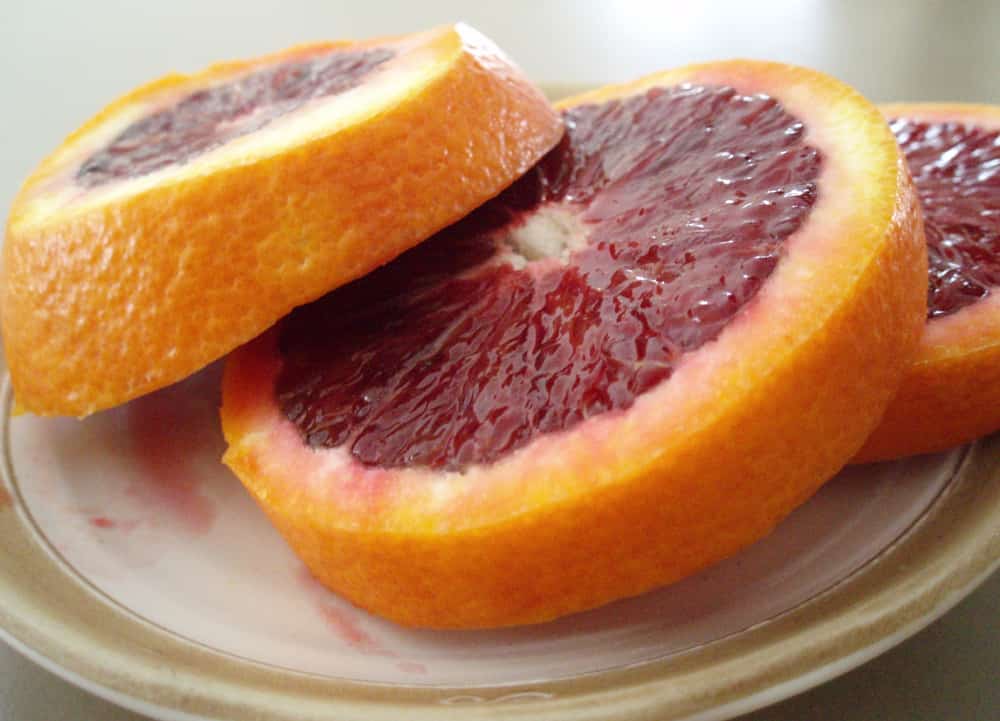Oranges are a fruit known throughout the world. From enjoying a sweet, tangy slice for breakfast to using the zest to perk up your baking, people relish oranges differently. To date, there are 400 distinct varieties of oranges ranging from sweet to bitter in taste. Let us look at the 11 most important types of oranges to know.
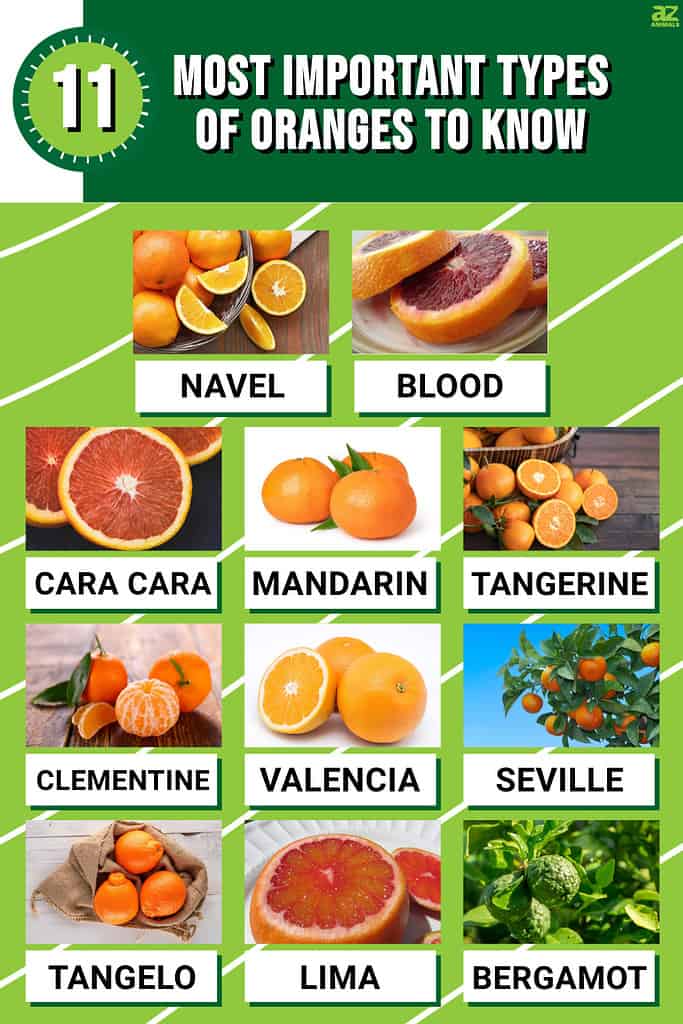
Read on for details about the sweetness, acidity, difficulty in peeling, and seeds of these oranges.
1. Navel Orange
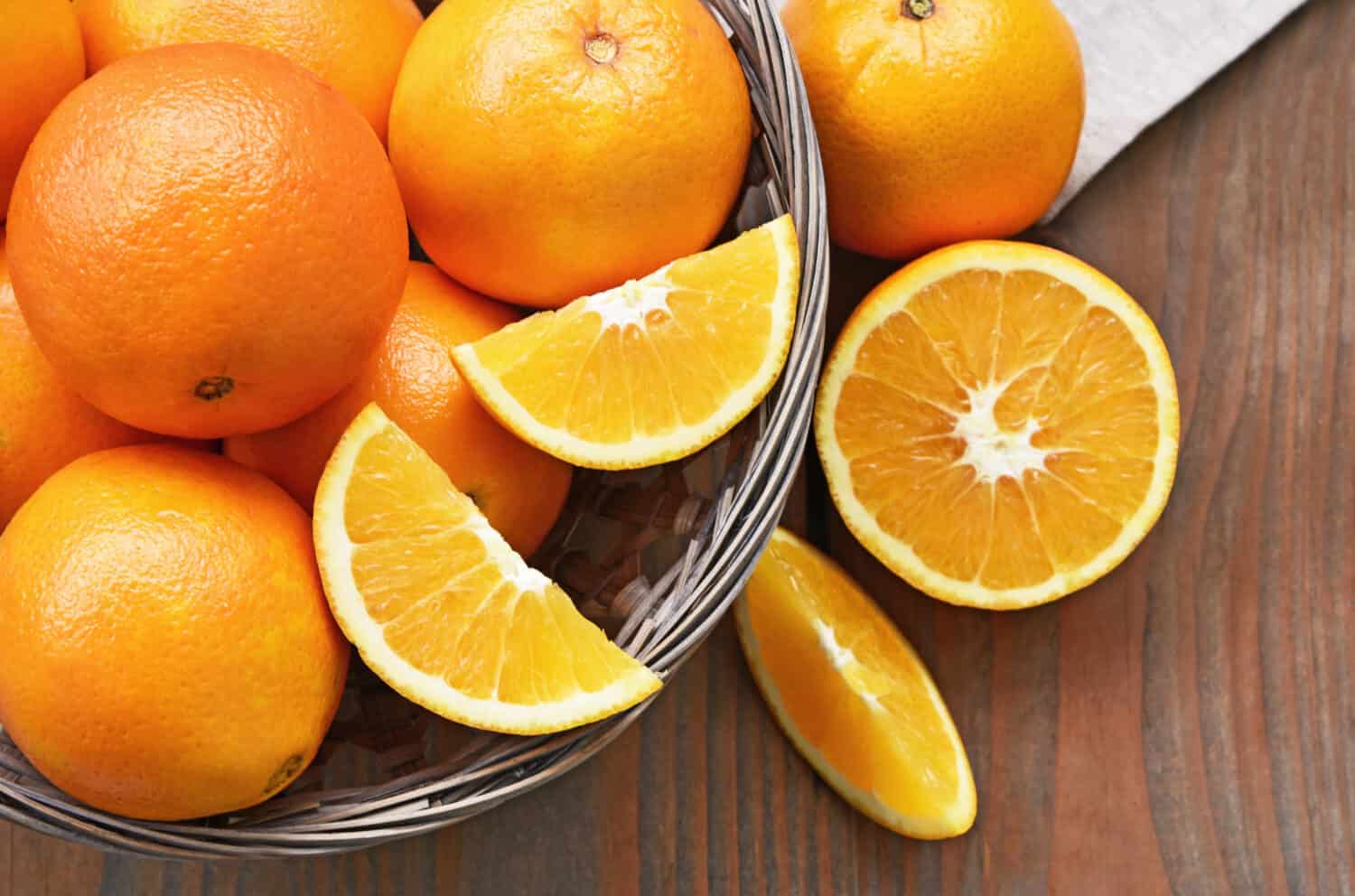
High in vitamin C and low in acid, the navel orange is known for its sweetness.
©PosiNote/Shutterstock.com
When you think of an orange, a navel orange most likely comes to mind. Available at almost any grocery store, this type of orange is commonly chosen as a snack or natural supplement for a cold. High in vitamin C and low in acid, the navel orange is known for its sweetness. Also, this variety is easy to peel and seedless. Of all the types, this is an important orange to know.
Navel oranges are native to Brazil, but seedlings were introduced to California and Florida in the 1800s. Today, the biggest growers of navel oranges are Brazil, California, Florida, Arizona, China, and India.
2. Blood Orange
Also known as a “raspberry orange,” its name originates from the eye-catching red flesh beneath its peel. On the tangier side, many people have likened its taste to a cross between navel oranges and raspberries. While it has a tougher rind to peel, it is well worth the effort as blood oranges are quite succulent. Many use this type of orange for juicing.
The distinct crimson color of the orange comes from a pigment called anthocyanin. This pigment develops on low-temperature nights. Originally from the southern Mediterranean region, this area has the perfect fall and winter evenings for the anthocyanin pigment to develop on the blood oranges.
The largest growers of the blood orange are Italy, Spain, Australia (in recent years), and California. The season is usually from November to March.
3. Cara Cara Orange
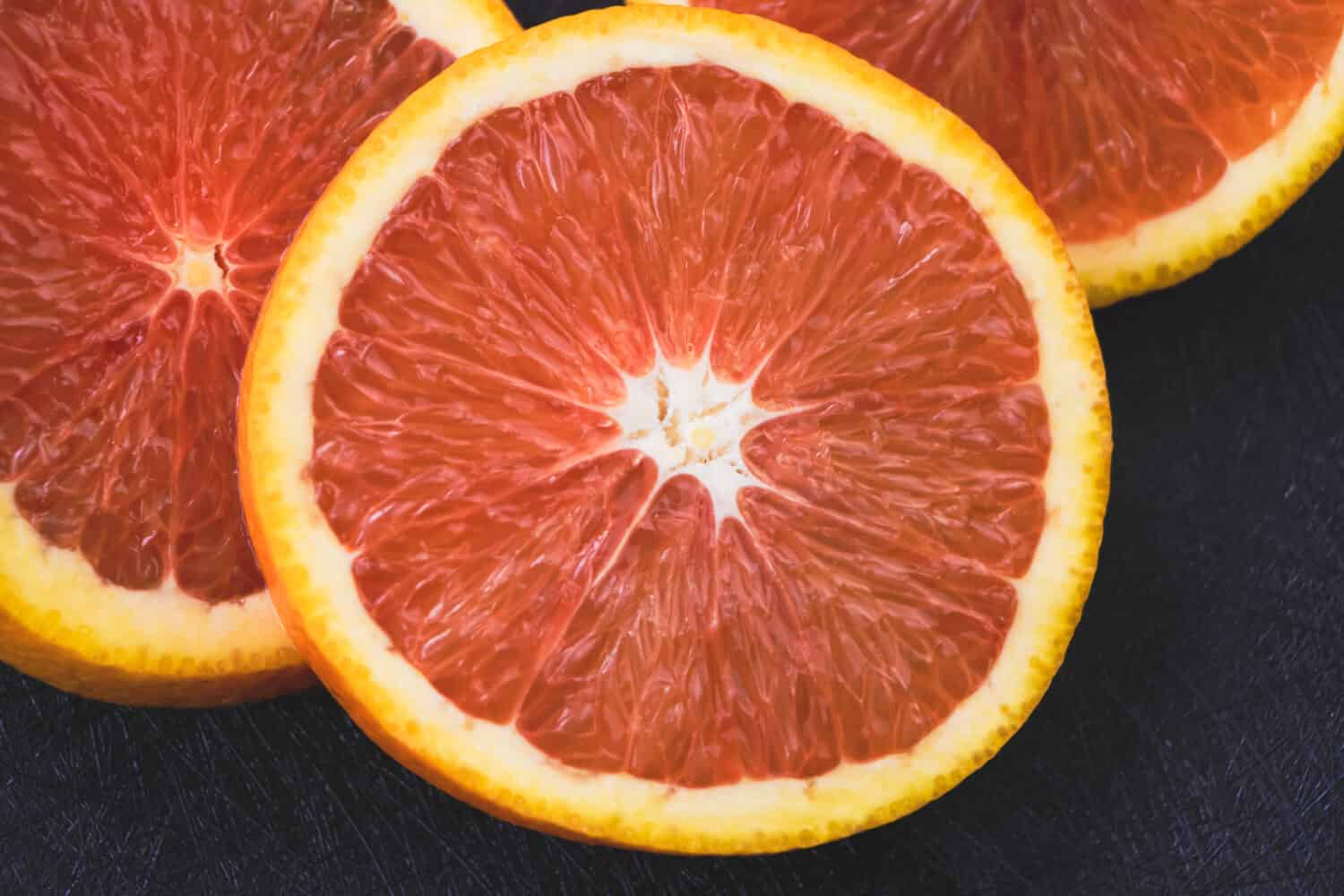
The Cara Cara orange’s flavor is extra sweet with subtle acidity.
©February_Love/Shutterstock.com
While the origin of the Cara Cara orange is uncertain, many surmise that it was a mutation of a Washington navel orange tree. It has a deep red coloring—much like the blood orange. But its flavor is extra sweet with subtle acidity, much like cherry or blackberry. And similar to the navel orange, the Cara Cara orange is simple to peel and virtually seed-free. Many people prefer this type of orange for snacking and juicing.
While they are native to Venezuela, the Cara Cara orange is grown in other South American countries and California also.
4. Mandarin Orange

Mandarin oranges have a thin, loose skin, making it an easy orange to peel.
©gresei/Shutterstock.com
A smaller orange with a plump, oval shape, mandarins are particularly sweet. With hints of vanilla and spice, mandarins are the favored orange for desserts. They have thin, loose skin that makes it simple to peel. Plus, mandarins split into segments easily and without much mess.
Some of the top growers of mandarin oranges are China, Spain, Turkey, Egypt, and Morocco. In the United States, California also cultivates mandarin oranges, but nowhere on the scale of China and Spain.
5. Tangerine
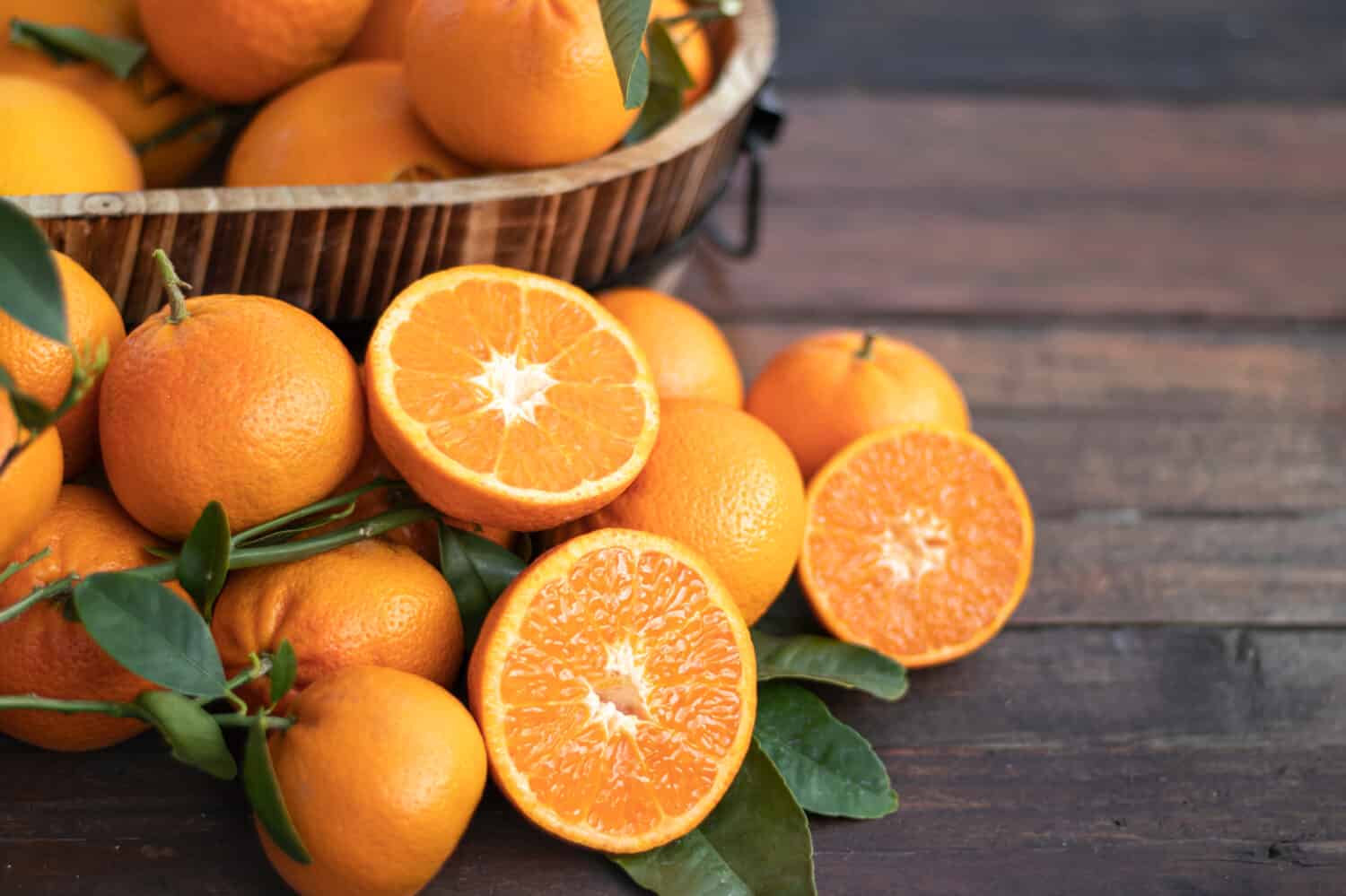
Worldwide, Turkey is a major producer of tangerines.
©PradaBrown/Shutterstock.com
A tangerine is a hybrid of a mandarin orange and pomelo. While they are larger in size than mandarins, tangerines are a bit tarter than their mandarin relative. However, tangerines are still sweeter than the navel orange. Juicy with a brief, tart aftertaste, this fragrant fruit is perfect for smoothies, jams, or even a complementary flavor for your tea.
In 2020, the United States Department of Agriculture recorded 890,000 boxes of tangerines produced between California, Florida, and other states. Worldwide, Turkey is a big producer of tangerines as well as China, South Africa, and Morocco.
6. Clementines
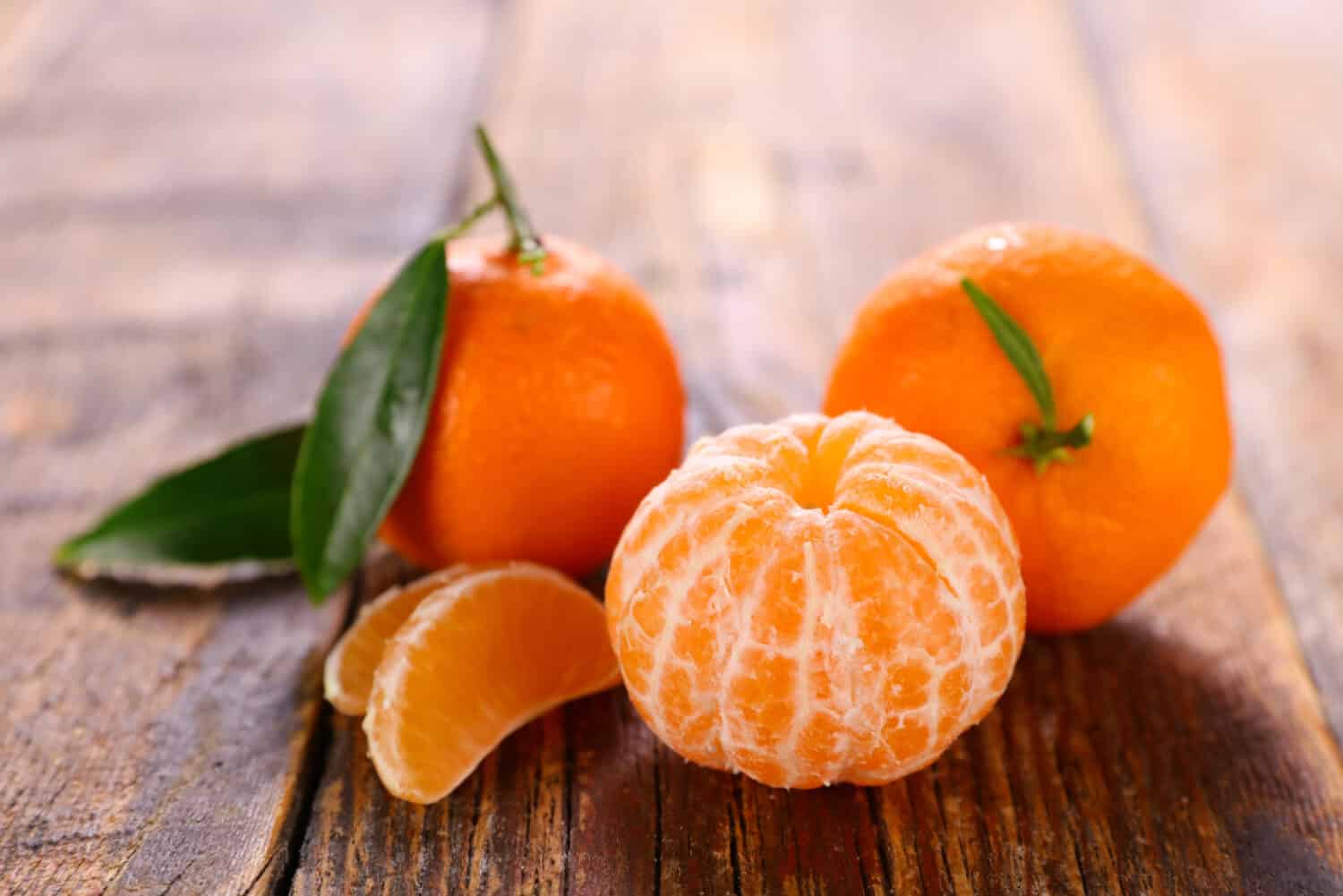
Clementines are a particularly popular snack among children.
©margouillat photo/Shutterstock.com
One of the most popular types of orange among children, the clementine is a mix of a willow leaf mandarin and sweet orange. It’s smaller than a mandarin in size, but the clementine still features a flattened, oval shape. It’s a very juicy and sweet fruit with incredibly simple skin to remove. Plus, it has no seeds (also a trait children love). Clementines are one of the top choices for a quick snack or lunch supplement.
In 2021, China ranked the highest producer of clementines, followed by Spain and Turkey. Of course, in the United States, California, Florida, and Texas work hard to produce these special little oranges as well.
7. Valencia
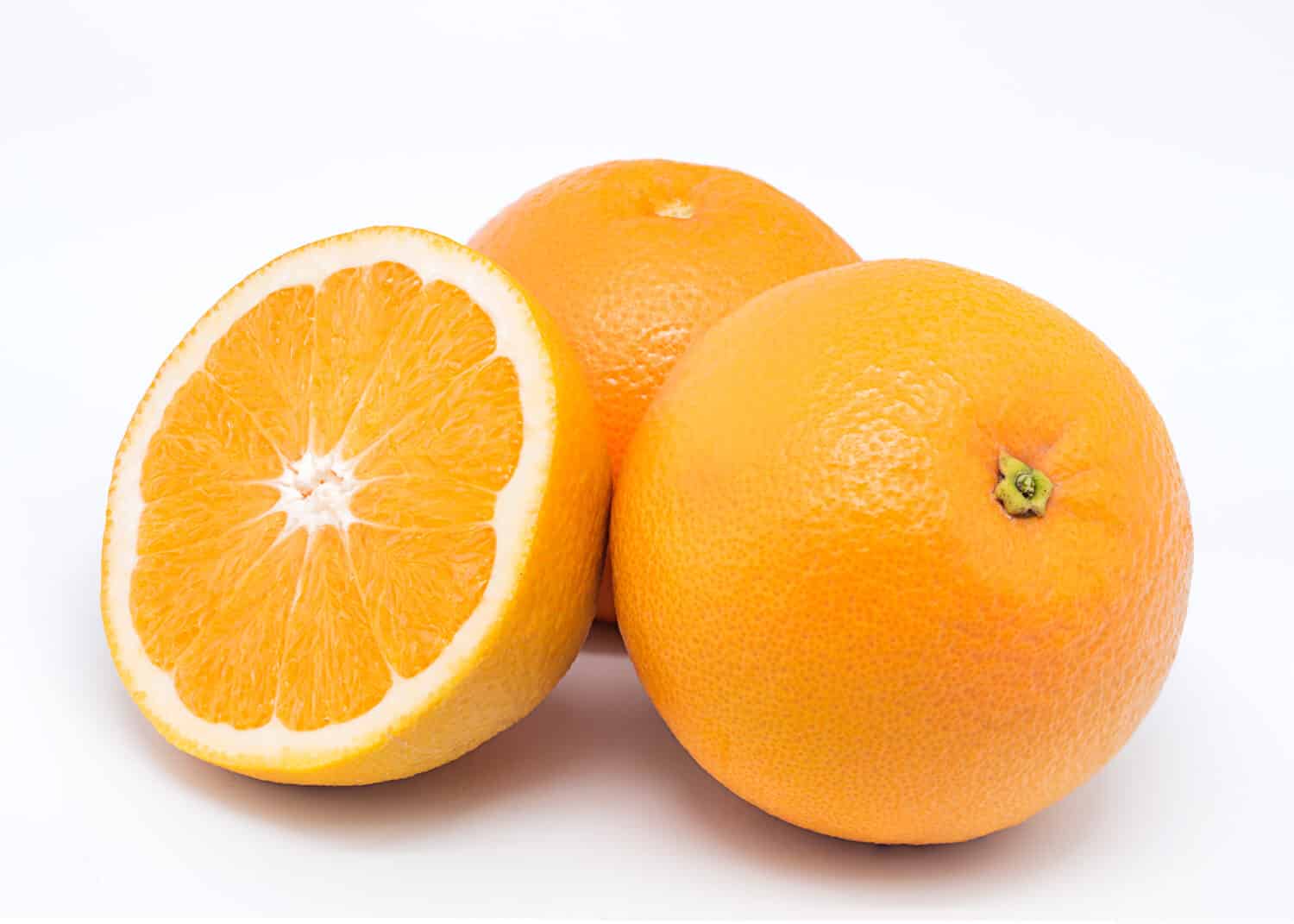
A majority of orange juices come from the Valencia orange.
©Luiscar74/Shutterstock.com
If you are an orange juice enthusiast, you are most likely drinking the juice of a Valencia orange. A hybrid of a mandarin and pummelo, the Valencia has one to nine seeds per orange. Incredibly sweet in taste and bursting with juice, their thin skins are simple to remove for the squeezing process. However, people also enjoy them in salads, syrups, or cocktails.
Despite being named after the city of València, Spain, the Valencia orange was created in California in the mid-1800s. The city of València has the reputation of having the sweetest orange trees—a fitting namesake for this brightly-flavored orange.
Valencia’s native home of California is still one of the biggest growers of this orange, followed by Florida. Outside the United States, however, Mexico and Brazil are also big contributors to the Valencia orange market.
8. Seville Orange

Also known as “bitter oranges,” this type of orange is rarely eaten raw.
©Thanasis F/Shutterstock.com
This type of orange has higher acidity, making it a sour variety of orange. Also known as “bitter oranges,” they are very rarely eaten raw. The rind, juice, and zest are primarily used in cooking. People enjoy Seville oranges in salad dressings, sauces, or aromatherapy. In particular, they make delectable marmalades because of their strong orange smell and tangy taste.
Introduced in Spain in the 10th century, Spain is still one of the top producers of the Seville orange. Other competitors include the United States, Mexico, South America, and Asia.
9. Tangelo

The tangelo growing season is between December and March.
©Oleksandr Berh/Shutterstock.com
A mix of a mandarin or tangerine with a pomelo, the tangelo is very juicy with medium levels of acidity. Bursting with the honey-like sweetness of a tangerine with the sour taste of a pomelo, the tangelo makes an adventurous glass of orange juice. Although they have tight skin, making them hard to peel, the juicing of this fruit is well worth it.
Grown between December and March, varieties of tangelos are produced in California, Florida, Arizona, Brazil, and Jamaica.
10. Lima Orange
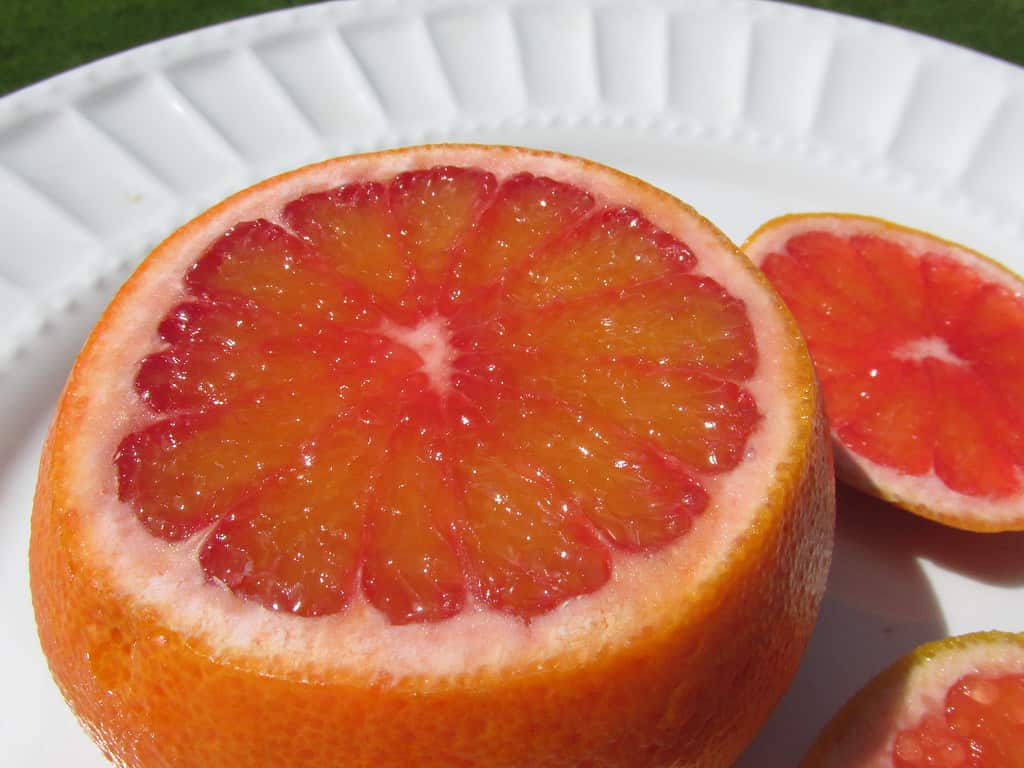
Because acid helps prevent oranges from spoiling, this type of orange is not widely produced.
Also called “acid-less oranges,” the Lima orange has low acid content. Compared to other types of oranges, the Lima orange has an ordinary taste without much flavor. Since the acid in oranges protects them from spoiling, this type isn’t largely produced. People usually eat this fruit raw, as it isn’t spectacular for juicing.
This is the top acid-less type of orange grown in Brazil. Many children prefer it, as it has a hint of flavor that is not overpowering.
11. Bergamot Oranges
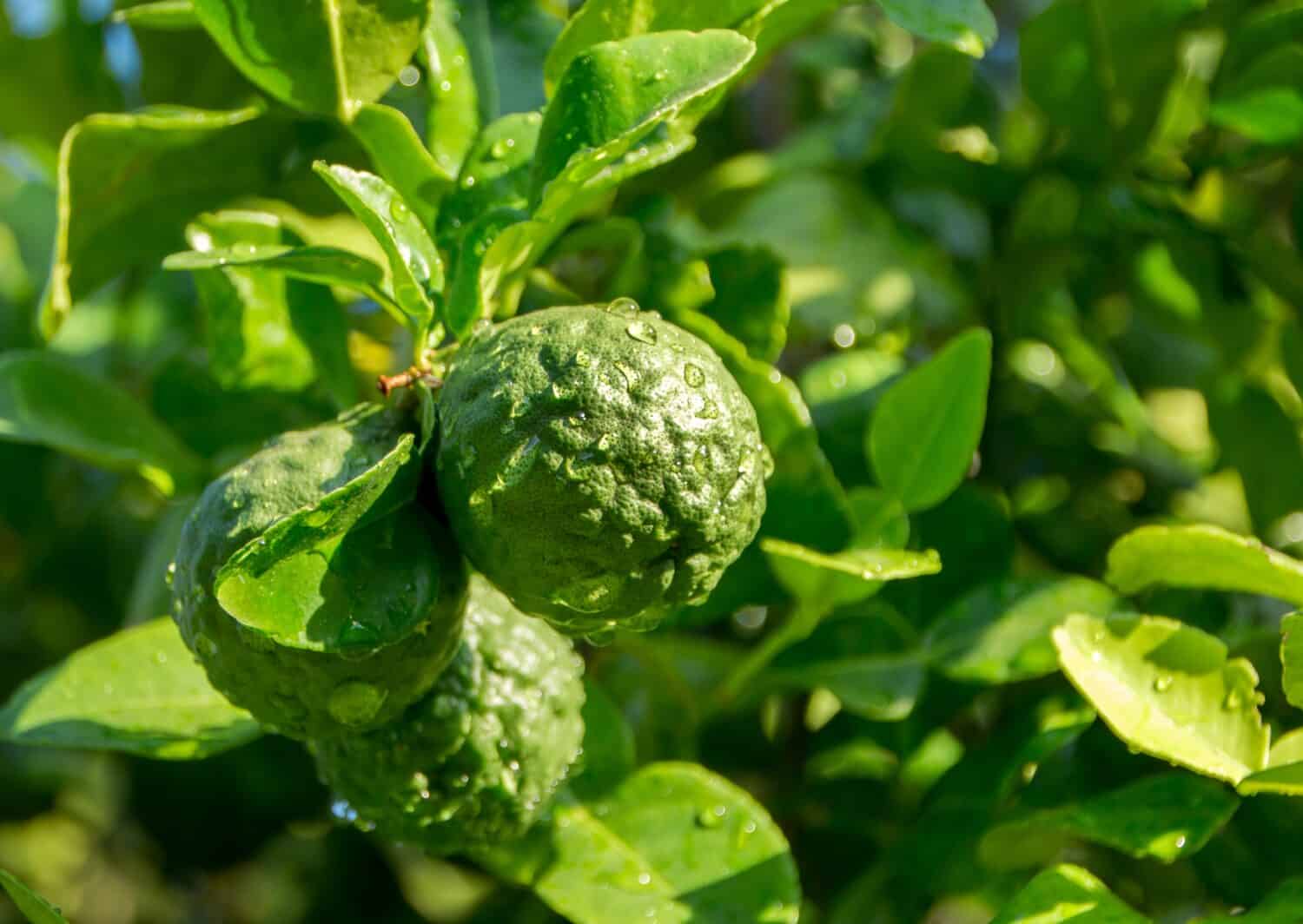
The Bergamot is native to southern Italy.
©9Witgiggs/Shutterstock.com
The Bergamot has a very bitter taste. It is often used as a supplementary flavor and rarely eaten. Prized for its aromatic peel, it’s a main addition to Earl Grey tea. But its scent is also incorporated into perfumes, toiletry products, and essential oils.
While it is the same size as an orange, it features green or yellow coloring when ripe. Thought to be a hybrid of a lemon and a bitter orange, its bitter flavors are sweeter than a lemon but not that of a grapefruit.
Native to southern Italy, the Bergamot orange is also produced in Argentina, Brazil, and Southeast Asia.
Summary of the 11 Most Important Types of Oranges to Know:
| Type of Orange | Characteristics | Where Grown |
|---|---|---|
| Navel | Easy to peel; seedless | Native to Brazil but also grown in California, Florida, China, and India |
| Blood | Tangy, tough rind | Italy, Spain, Australia, and California. |
| Cara Cara | Extra sweet, subtle acidity, easy to peel, almost seedless | Native to Venezuela, but grown elsewhere in South America and in California |
| Mandarin | Very sweet, easy to peel | Mostly in China and Spain, but also in Turkey, Egypt, Morocco, and California |
| Tangerine | Slightly tart, juicy | Turkey, China, South Africa, Morocco, California, Florida, and other states. |
| Clementine | Sweet, juicy, easy to peel, seedless | China, Spain, Turkey, California, Florida, and Texas |
| Valencia | Very sweet, juicy, easy to peel, has seeds | Native to California, but also grown in Florida, Mexico, and Brazil |
| Seville | Bitter, high acidity | Native to Spain, but also grown in the United States, Mexico, South America, and Asia. |
| Tangelo | Very juicy, medium acidity, hard to peel | Brazil, Jamaica, California, Florida, and Arizona. |
| Lima | Low acidity | Brazil |
| Bergamot | Very bitter, used in commercial products | native to southern Italy, but also grown in Argentina, Brazil, and Southeast Asia |
Thank you for reading! Have some feedback for us? Contact the AZ Animals editorial team.




